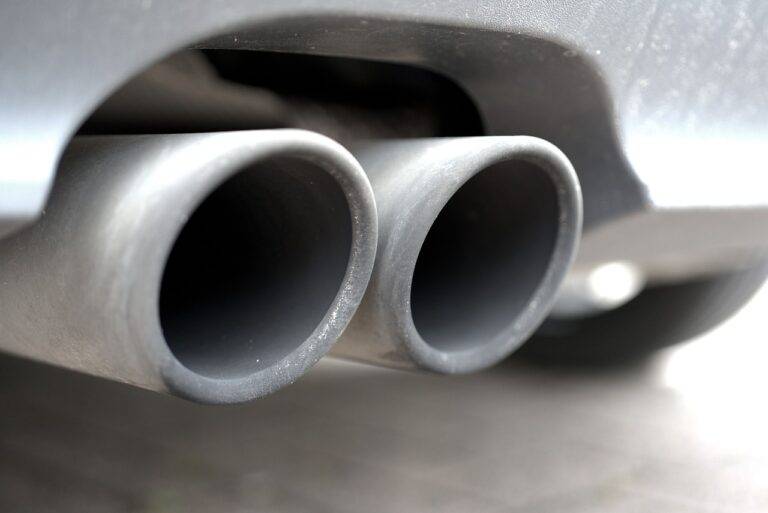The Role of Tech in Emergency Response and Disaster Management
Emergency response and disaster management have always been critical areas where technology plays a crucial role in saving lives and minimizing damage. With the advancement of technology, there are now more tools and resources available to assist agencies and organizations in responding to emergencies and managing disasters effectively. In this article, we will explore the various ways in which technology has revolutionized emergency response and disaster management.
Early Warning Systems
One of the most significant advancements in emergency response and disaster management is the development of early warning systems. These systems use cutting-edge technology such as satellite imaging, weather forecasting, and seismic monitoring to detect potential disasters before they occur. By providing timely alerts to authorities and the public, early warning systems help in evacuating people from danger zones and preparing for disaster response.
Communication and Coordination
Effective communication and coordination are crucial in emergency response and disaster management. Technology has provided a range of communication tools such as two-way radios, satellite phones, and social media platforms to facilitate real-time communication between responders, agencies, and affected communities. These tools enable quick decision-making, resource allocation, and collaboration among different stakeholders during emergencies.
GIS Mapping and Data Analysis
Geographic Information Systems (GIS) mapping and data analysis have become indispensable tools in disaster management. These technologies provide detailed maps, spatial data, and analytics to help responders understand the affected areas, track resources, and prioritize response efforts. By utilizing GIS mapping and data analysis, agencies can make informed decisions based on accurate information and optimize their disaster response strategies.
Drones and UAVs
Drones and Unmanned Aerial Vehicles (UAVs) have transformed the way emergency responders assess damage and provide assistance in disaster-affected areas. Drones equipped with cameras and sensors can quickly survey disaster sites, gather real-time data, and deliver essential supplies to remote locations. These aerial devices enhance situational awareness, improve response times, and reduce risks for responders in challenging environments.
IoT and Sensor Technologies
The Internet of Things (IoT) and sensor technologies have revolutionized disaster management by enabling the collection and analysis of real-time data from various sources. By deploying sensors in critical infrastructure, buildings, and transportation systems, agencies can monitor conditions, detect anomalies, and predict potential hazards before they escalate into disasters. IoT and sensor technologies provide valuable insights for proactive decision-making and risk mitigation.
Artificial Intelligence and Machine Learning
Artificial Intelligence (AI) and Machine Learning (ML) have emerged as powerful tools in emergency response and disaster management. These technologies can analyze vast amounts of data, identify patterns, and make predictions to support decision-making during emergencies. AI algorithms can assist in resource allocation, damage assessment, and forecasting to enhance the effectiveness of disaster response efforts and optimize outcomes.
Robotics and Automation
Robotic systems and automation technologies are increasingly being utilized in disaster response to perform tasks that are dangerous or inaccessible to humans. Robots equipped with sensors and cameras can conduct search and rescue operations, debris removal, and hazardous material handling in disaster scenarios. By leveraging robotics and automation, responders can improve their efficiency, reduce risks, and save lives in challenging environments.
Virtual Reality and Simulation
Virtual Reality (VR) and simulation technologies offer immersive training experiences for emergency responders to simulate disaster scenarios, practice response procedures, and enhance their skills in a controlled environment. VR simulations enable responders to gain hands-on experience, improve decision-making under pressure, and collaborate with team members in virtual scenarios. By using VR and simulation, agencies can better prepare for emergencies and enhance their response capabilities.
Conclusion
Technology continues to transform emergency response and disaster management by providing innovative solutions, enhancing capabilities, and improving outcomes for responders and affected communities. With the integration of cutting-edge technologies such as early warning systems, communication tools, GIS mapping, drones, IoT, AI, robotics, and VR, agencies can mitigate risks, respond effectively to disasters, and save lives in critical situations. As technology evolves and new innovations emerge, the role of tech in emergency response will continue to shape the future of disaster management for the better.
FAQs
Q: How does technology help in early warning systems?
A: Technology such as satellite imaging, weather forecasting, and seismic monitoring is used to detect potential disasters before they occur and provide timely alerts to authorities and the public.
Q: What role does GIS mapping play in disaster management?
A: GIS mapping provides detailed maps, spatial data, and analytics to help responders understand affected areas, track resources, and prioritize response efforts during disasters.
Q: How do drones assist in disaster response?
A: Drones equipped with cameras and sensors can quickly survey disaster sites, gather real-time data, and deliver essential supplies to remote locations, enhancing situational awareness and response times.
Q: What benefits do AI and ML offer in emergency response?
A: AI and ML technologies can analyze data, identify patterns, and make predictions to support decision-making, resource allocation, and forecasting during emergencies, enhancing the effectiveness of disaster response efforts.
Q: How do robotics and automation improve disaster response?
A: Robotic systems can perform tasks that are dangerous or inaccessible to humans, such as search and rescue operations, debris removal, and hazardous material handling, to enhance responder efficiency and save lives in challenging environments.
Q: In what ways can VR and simulation technologies benefit emergency responders?
A: VR and simulation technologies offer immersive training experiences for responders to simulate disaster scenarios, practice response procedures, and enhance decision-making skills in a controlled environment, improving preparedness and response capabilities.





